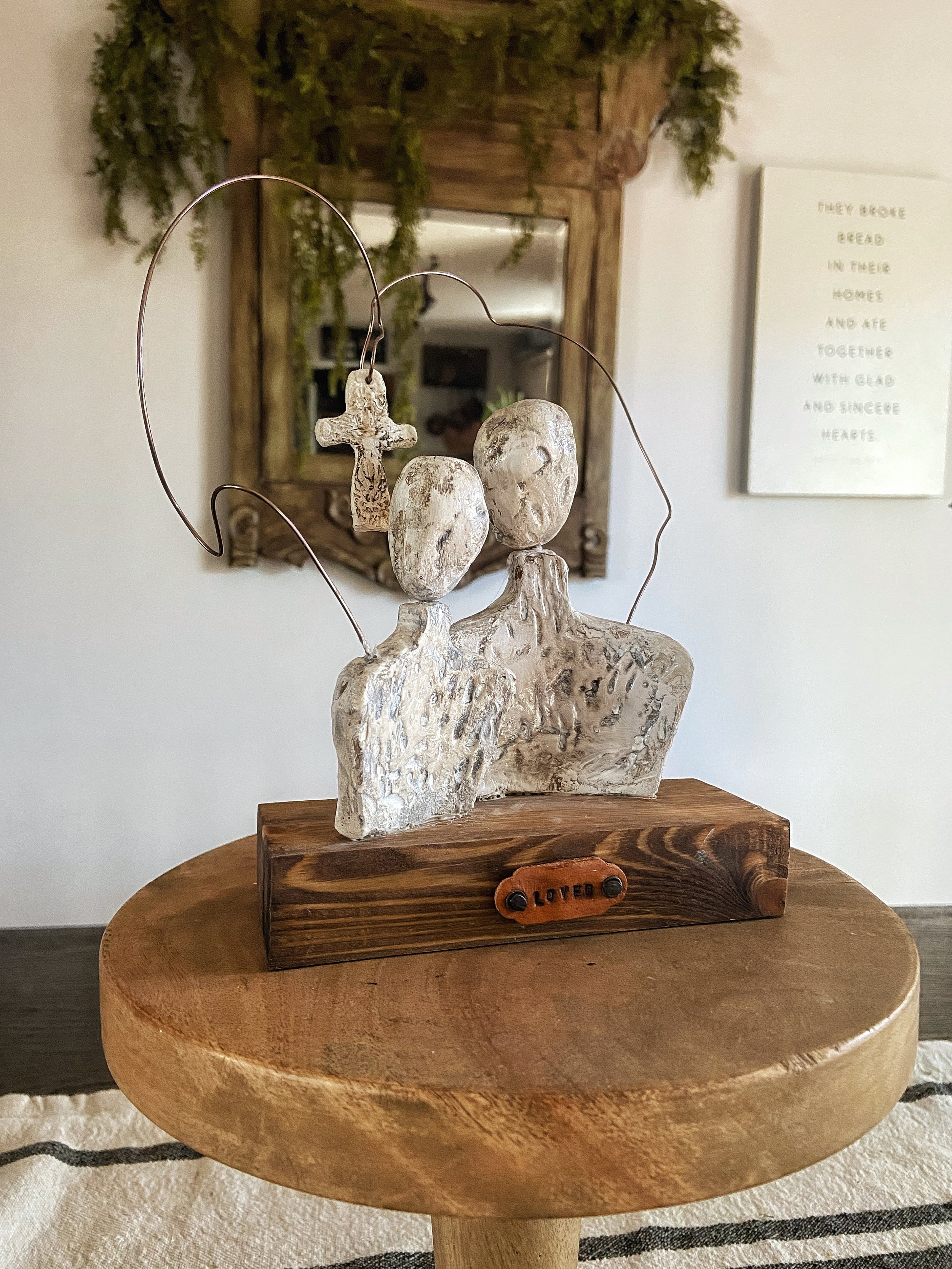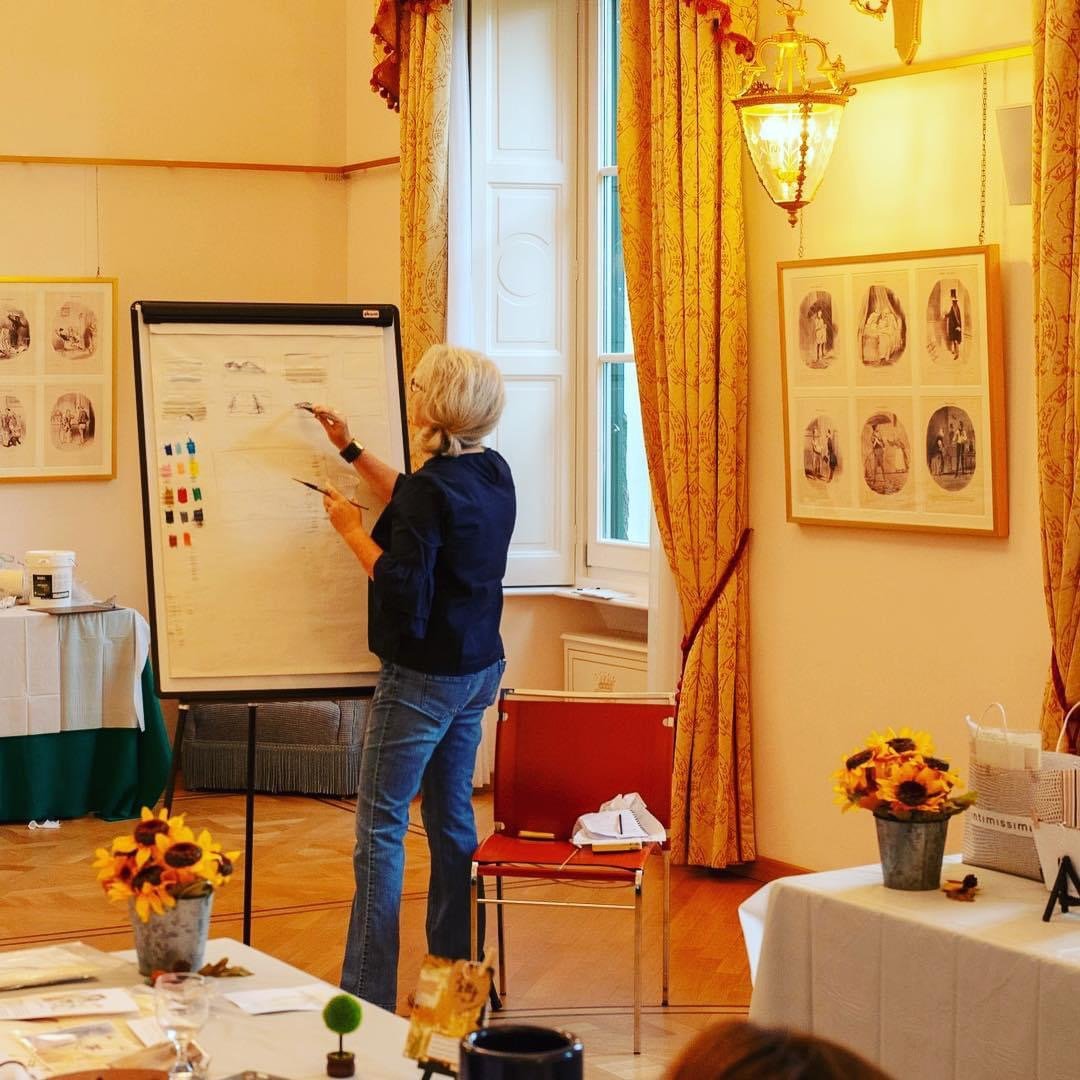A Weight of Glory and Beauty {…thoughts on art and AI…}
“And you shall make holy garments for...your brother, for glory and for beauty.”
We are already living in an age when so much is digital—meaning it is weightless, placeless, rootless.
And I’ve never been more excited, never more hopeful, about being an artist.
I am far from feeling fearful about the relevance of the work of my hands.
There is an aching hunger for the tangible, the local, and the handmade. We live in bodies, after all, and as I have said here on the blog and on my social media ten thousand times, “the things we do with our bodies and in our bodies matter profoundly.”
This is a theological truth and a deeply human one. In a world mediated by screens and AI-generated images, art that bears marks of physicality and embodiment—art that requires human hands, real time, and the labor of love—will be the art that enriches and nourishes us.
(See/hear this podcast I did with Matt Tommey for some sort-of “pre AI” thoughts on this topic)
The concern of the moment, as it pertains to the visual artist, is the disembodied flood of imagery: images that exist everywhere and nowhere at once.
They are weightless in the worst sense, untethered to any particular life, place, or heart.
CS Lewis spoke of “the weight of glory”. There truly is a such thing as the tangible presence of God. There is a such thing as artists making physical things in the physical world for the good of their neighbor. God Himself commanded making, in His exact words in Exodus 28, “for glory and for beauty”.
The glory of God and the beauty of God are near-interchangeable concepts. You do not experience one without the other.
The glory of God and the beauty of God always have a tangible essence, the very expression of Whom, of course, was Jesus.
Jesus came as God in flesh. As such, He was very rooted to time and place and context, and as such He was as embodied as any human who has ever lived and ever will live.
He brought incalculable value to what it means to be human, to love others, and even to make things. He healed human bodies so that they could continue being human, continue loving others, and continue on in their making.
AI imagery severely and completely lacks this embodied element, and as such, this flood of images lack not only context but also the layers of meaning that can only emerge through human experience and a human story. They cannot speak to us of struggle or grace, of sweat or salvation. They cannot carry the symbolic power of a handmade object offered in service to the soul.
one of my latest sculptures.
What a remarkable opportunity, then, for artists who choose to practice in the physical world! We have an unprecedented opportunity to make physical things in the physical world. And I believe we have been given a fresh command from heaven to make “for our brother, for beauty and for glory.”
What an honor, to work with materials that have weight and texture. To create objects that bear a sense of place, infused with meaning because of where they were created and by whom. This will be the kind of art that lasts, because it meets the deepest longings of the human spirit. People will crave art that feels real—art that you can touch and hold, art that doesn’t simply decorate, or follow the latest trends, but embodies.
Every single day, now, I activate my imagination, and take time to not just make, but also to see myself MAKING.
I imagine a painting layered with textures from crushed minerals gathered in a specific location—an homage to places like the Tremont Trail in the Smokies. I think of sculpture formed from wood salvaged from “Mimi’s meadow” where The Preacher and I walk (don’t think I haven’t already nabbed an old fence post - with permission from the city!)
I have already made art from materials harvested from the roof of our old church building — material rich with history and symbolism.
this piece is still available, and made with the roof felt dating back to the late 50’s from the roof of our sweet church - I imagine it to be suffused in generations of prayer and worship…
In my imagination, I see myself making textile-art, handwoven and with patterns that tell a regional story, tactile and imperfect in all the ways that make them beautiful. (I’ve made things like this before.). I see myself creating works that demand time and attention. They invite the viewer to slow down, to touch the edges of something eternal.
This return to embodiment is not a rejection of technology but a reckoning. Technology, for all its wonders, cannot replace the irreplaceable: the work of the human hand, infused with the intentions of a human heart. Only we can bring meaning to the materials of the earth—clay, fiber, metal, pigment, stone. Only we can imbue art with the story of place, the sacred connection between creator, creation…and spiritual community.
If you and I are friends at all, you already know that every good and creative work of art I have ever made is deeply connected to this practice of beauty called “the gathering of the saints”.
As AI churns out endless reproductions, artists will stand as the stewards of reality. We will be the ones to remind the world that real beauty is a practice—not a chase, and not a purchase.
Real beauty requires the patience of one heart towards another heart, in the form of friendship. Real beauty involves long-suffering hands, the presence of time, and the courage to be rooted in a particular place, even when that place isn’t the latest cool location where all the Alpha Lady Gangs are gathered.
Maybe especially then. Ha.
When the virtual becomes overwhelming, and it already is, it will be the physical that nourishes us: the handwritten note, the hand-thrown vessel, the painted canvas, the woven cloth, the carved bowl, the land-touched installation.
We are embodied beings, and we need embodied beauty. The future of art—true art—lies in its rootedness, its locality, its sense of being real in a disembodied world. The act of making something physical, for the good of another, becomes a badass act of quiet resistance. It is a declaration: this matters. What we do with our bodies and in our bodies matters. What we create matters. Where we create it matters.
And in this embodied art—art heavy with place, meaning, and community—there lies not just beauty, but healing. First, for the artist. Then, for her neighbor. Then…the world.
Never have I ever been prouder to be a maker. Thank you for allowing me to be one of your family’s artist-makers.



